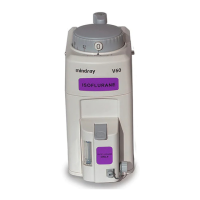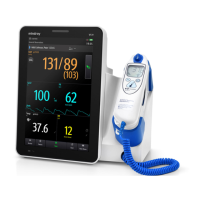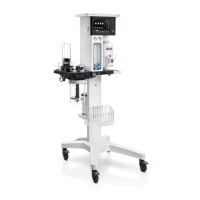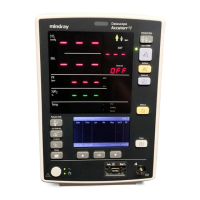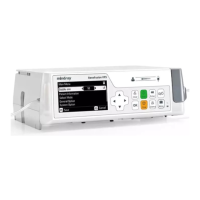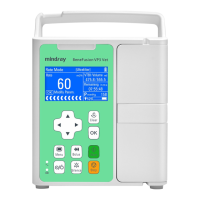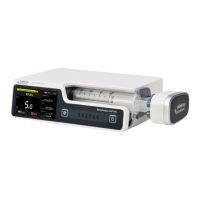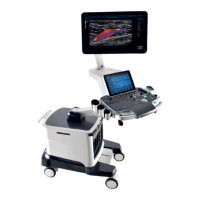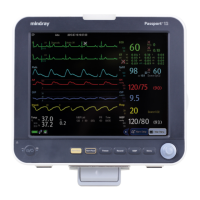V Series Operating Instructions 27 - 3
Product Maintenance Care and Cleaning of SpO
2
Sensors
27.3 Care and Cleaning of SpO
2
Sensors
NOTE: Refer to the individual instruction sheets that are packaged with each
sensor.
• Check sensors and cables daily for signs of damage. Replace as required.
• Clean reusable SpO
2
sensors before and after each new patient.
• Wipe the patient contact area using a soft cloth with mild soap and water solution or isopropyl
alcohol. Hydrogen peroxide can be used to remove dried blood.
• Allow the sensor to completely dry before using.
CAUTION: When cleaning SpO2 sensors, do not use excessive amounts of liquid.
Wipe the sensor surface with a soft cloth, dampened with cleaning
solution. Do not attempt to sterilize.
Cleaning and Re-use of a Nellcor
®
Sensor
Nellcor reusable SpO
2
sensors may be reattached to the same patient if the emitter and detector
windows are clear and the adhesive still adheres to the skin. The adhesive can be partially
rejuvenated by wiping with an alcohol wipe and allowing the sensor to thoroughly air dry prior to
replacement on the patient.
Do not immerse any Oxisensor
®
, OxiMax
®
, Durasensor
®
, Oxiband
®
, or Duraform
®
oxygen transducers,
the Nellcor
®
RS-10 or Max-Fast
®
oxygen transducers, or any Nellcor
®
adhesive in water or cleaning
solution. Clean Durasensor
®
, Oxiband
®
, and Duraform
®
oxygen transducers, and the Nellcor
®
RS-10 or
Max-Fast
®
oxygen transducers by wiping with a disinfectant such as a solution containing 70%
alcohol. Do not sterilize by irradiation, steam, or ethylene oxide. Use a new Oxiband
®
adhesive wrap or
FORM-A adhesive bandage for each patient. Do not re-sterilize Oxisensor
®
or OxiMax
®
oxygen
transducers.
27.4 Care and Cleaning of Reusable Temperature
Probes
NOTE: Refer to the individual instruction sheets that are packaged with each
temperature probe for additional information.
• Check temperature probes and cables daily for signs of damage. Replace as required.
• Clean the probes before and after each new patient.
• Wipe the patient contact area using a soft cloth with mild soap and water solution or isopropyl
alcohol.
• Allow the probe to completely dry before using.

